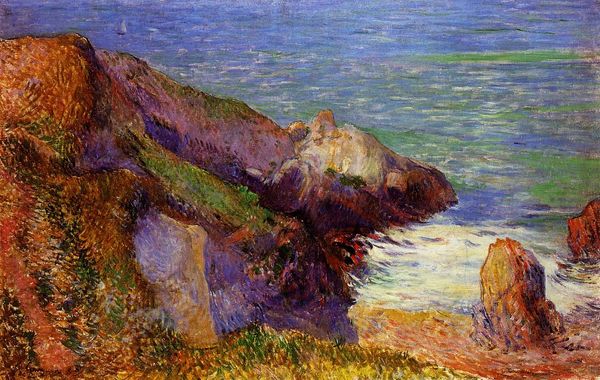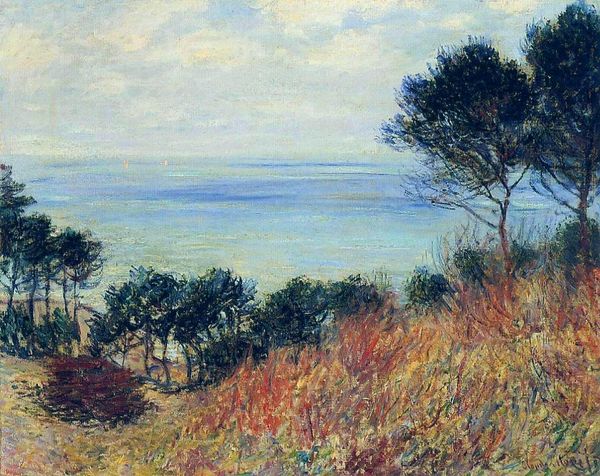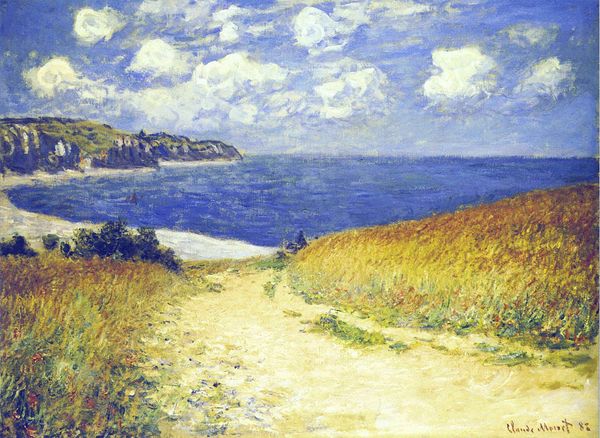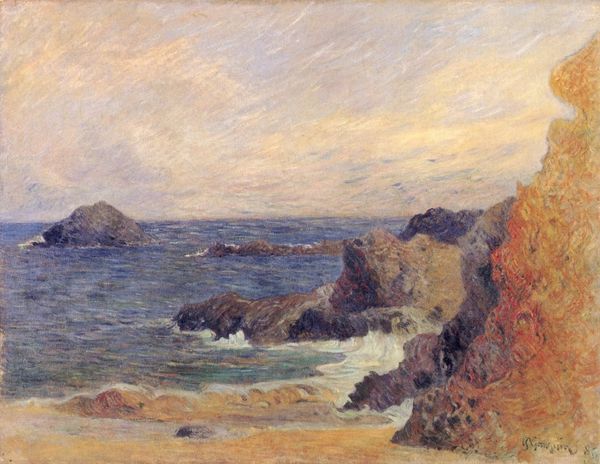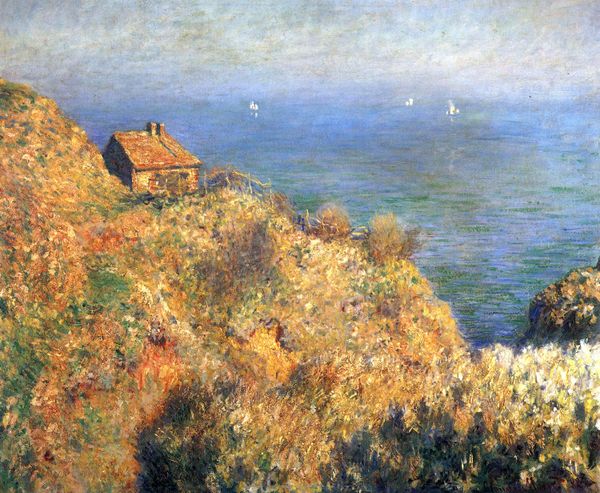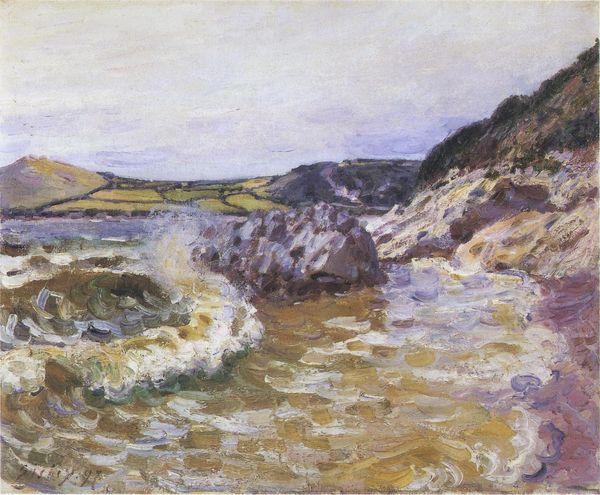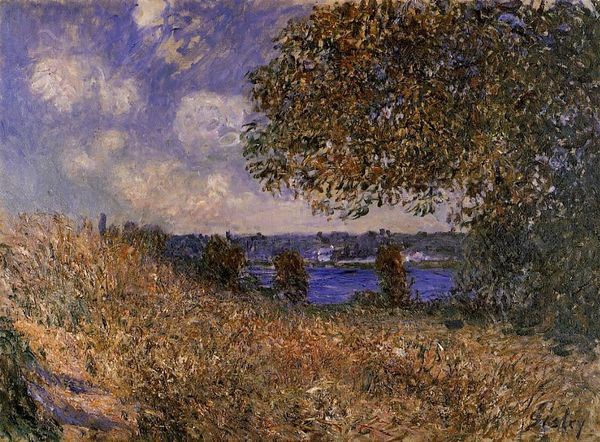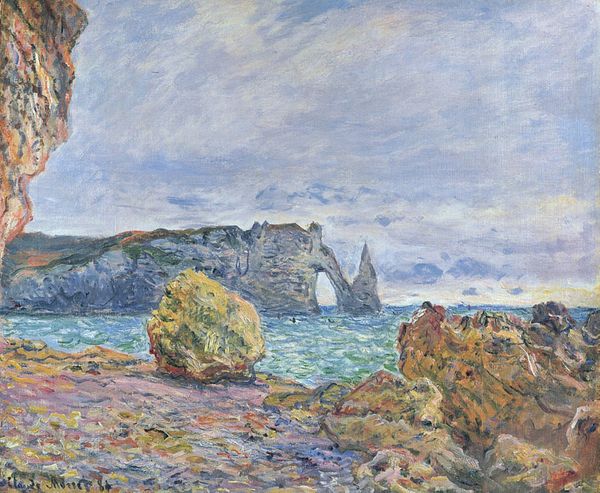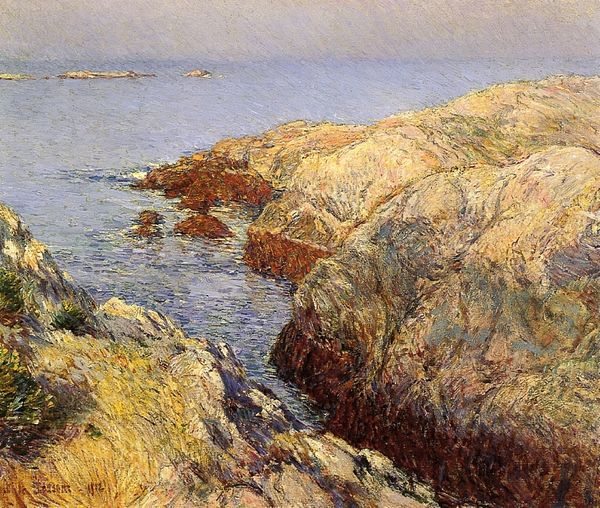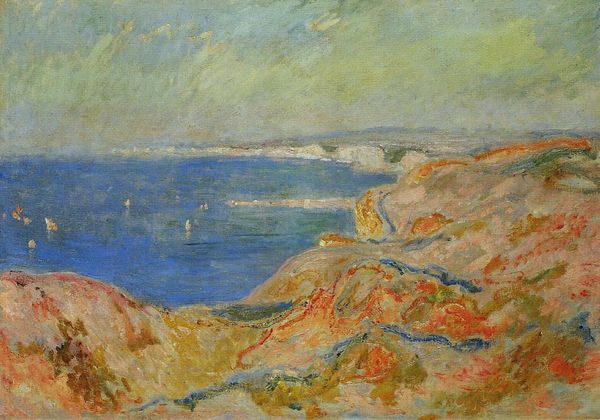
Copyright: Public domain
Editor: This is Renoir's "View at Guernsey," painted in 1883. It’s an oil painting, a classic Impressionist scene. The colors feel so vibrant, even from this distance. It looks so relaxing, I wish I was there. How would you interpret this work? Curator: Well, I look at Renoir and I see an artist very much engaged with the societal shift towards leisure and the rise of the middle class. Guernsey was becoming a popular tourist destination, accessible by train. It represented a kind of freedom, and a space for recreation away from the city. The very act of painting en plein air, outdoors, becomes a commentary, a valuing of experience and the democratization of landscape art. Editor: Democratization? That’s interesting. So, he's not just painting a pretty scene. Curator: Precisely. The Impressionists as a whole were responding to a Salon system they found too restrictive. They literally went outside. Guernsey, like many Impressionist locales, represented a place outside traditional power structures, away from the Academy. Note also the deliberate brushstrokes, rejecting smooth, illusionistic finishes. Do you think that's purely aesthetic? Editor: No, that must be deliberate! It's a statement, right? The loose brushwork mirrors the transient experience of a tourist, a quick capture of the essence. Curator: Exactly. And think about who is buying these paintings? Increasingly, a new middle class with money to spend and a desire for these glimpses of a world beyond their daily lives. How does this impact art making, if at all? Editor: That's a good point! I guess it's a feedback loop: the art influences tastes, and the tastes influence art production. Thanks for your insights. This is much deeper than I thought at first glance. Curator: My pleasure. Remember, art exists in a world, reflecting and shaping the very fabric of its society. That’s the most important take away.
Comments
No comments
Be the first to comment and join the conversation on the ultimate creative platform.
